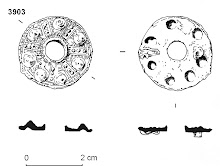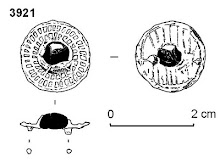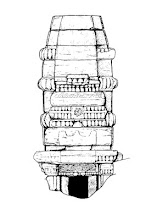Ecclesiastical and monastic archaeology is one of Urban Archaeology's core areas of expertise. Each year we carry out many projects at churches under Faculty -the church equivalent of planning permission, or at cathedrals under the Care of Cathedrals Measure. These projects can range from a one day watching brief on a new water pipe-trench in a parish church, to long term programmes of excavation and building recording at Gloucester Cathedral.
 |
| Holy Trinity church, with its distinctive truncated spire, sits above the small Cotswold town of Minchinhampton |
Whether it is a one day watching brief or a two year
recording program, every project receives our full focus and benefits from many
years of experience excavating in and around churches of all sizes. We ensure
that the potential archaeological risks and impacts are understood by the
Parochial Church Council (PCC), architect and contractors, and wherever
possible are minimised or designed around.
Delays and cost over-runs often result from a lack of understanding of legal and Faculty requirements, especially regarding human remains, and of the failure to integrate archaeological work with that of other contractors. We can't ensure that a project won't have unexpected archaeological costs, but we can help project teams create a design and methodology that minimises the archaeological impact, whilst making sure that archaeological work on site is done in an efficient and professional way.
Delays and cost over-runs often result from a lack of understanding of legal and Faculty requirements, especially regarding human remains, and of the failure to integrate archaeological work with that of other contractors. We can't ensure that a project won't have unexpected archaeological costs, but we can help project teams create a design and methodology that minimises the archaeological impact, whilst making sure that archaeological work on site is done in an efficient and professional way.
Holy Trinity Church, Minchinhampton
One current major project is the 're-ordering' of the parish
church of Holy Trinity, Minchinhampton, Gloucestershire. Urban Archaeology has been working with the Parochial Church
Council (PCC) and architect Antony Feltham-King at St Ann's
Gate Architects for over a year to help prepare for the re-ordering, and we
are now working on site with specialist conservation building contractor Nick Miles.
 |
| Removing rubble and dust from beneath the pews, the spoil is all checked for archaeological remains such as architectural fragments, pottery, bone and small artefacts |
















